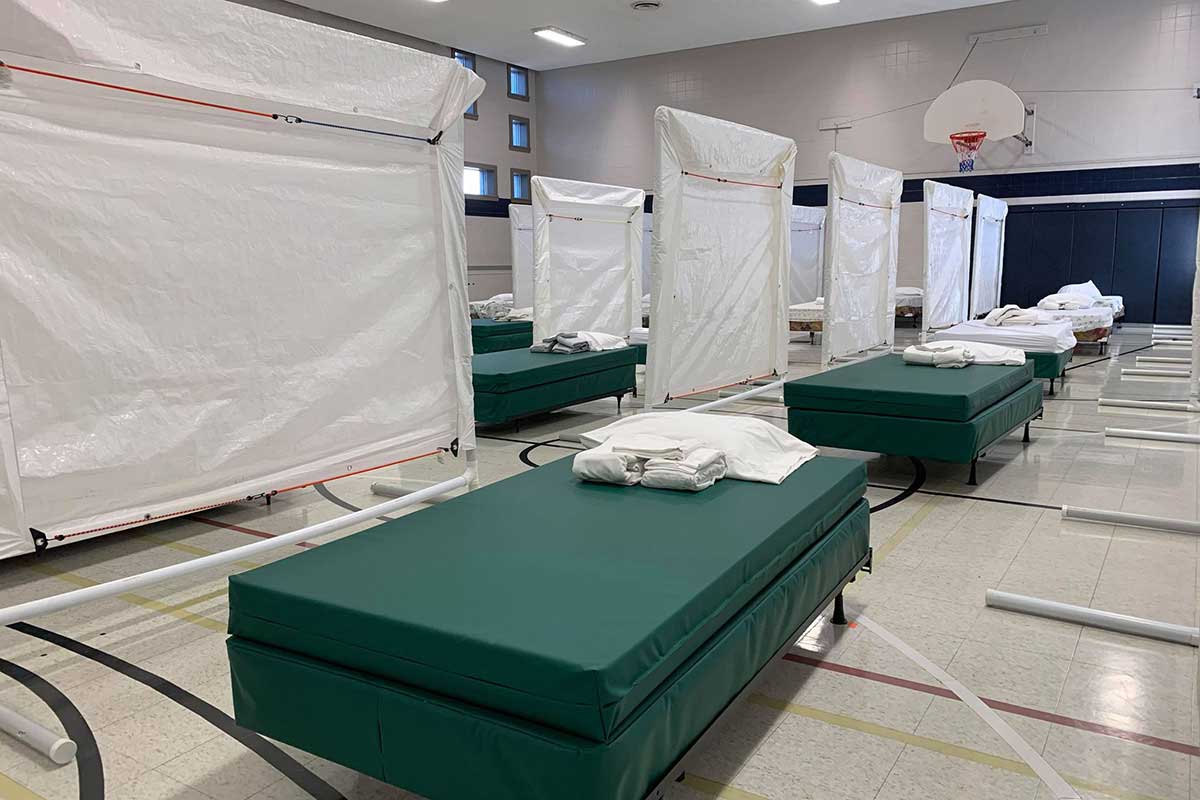There is no good time to have to move 125 vulnerable women from a secure shelter to a new improvised location. But Cornerstone Shelter for Women has made the most of a summer respite to set up temporary facilities in an Alta Vista community centre.
The experience tested the resiliency of both the women and the shelter staff, says Cornerstone’s executive director Sarah Davis. After some initial concern about moving from private rooms at a University of Ottawa residence to dormitory style in Alta Vista the women adapted well and gave positive feedback.
Since the centre was ill-equipped to provide food service, the staff doubled down to prepare daily meals at Cornerstone’s Booth St. residence for delivery to the centre. “The creativity of our Cornerstone team is unmatched,” Davis says.
The gym was turned into a spacious dorm with portable partitions to give a modicum of privacy. The centre’s wi-fi accessed the Internet and e-mail and its theatre provided movies and television. Soon after moving in, the staff began to reintroduce all-important support and recreational programs.
The summer was a blessing in that it helped with accommodation. Capacity at the university location for 125 was reduced to 107 at Alta Vista. Some women chose to stay with family or friends. Others camped out for a while. In early August the registration at the centre was down to 85, still about 25 more than the capacity of the shelter’s O’Connor St. residence.
The shelter’s challenges are taking place in the context of a dramatic increase in the number of homeless people and strained support services in Ottawa.
The dislocation began just before Christmas last year when the lack of physical distancing forced a move out of O’Connor St to the university location. It was always seen as a temporary solution but a shock came with notice to leave at the end of June, a month earlier than expected.
The next move will be back to O’Connor St. in November. But renovations that have been under way with the building’s infrastructure such as replacing a boiler won’t increase its capacity of about 60 residents.
That leaves two challenges. The first is finding alternative accommodation for the overcapacity and being ready in case a fourth wave of the pandemic strikes in the fall. Davis is in discussion with the City and is confident solutions will be found.
The bigger issue is the knowledge that the 40-year-old O’Connor St space isn’t a long-term solution. A new, expanded building with the right facilities is the answer. “That’s at the top of our to-do list,” Davis says.


Week of Prayer for Christian Unity annual service to be celebrated at Saint Paul University on Jan. 22